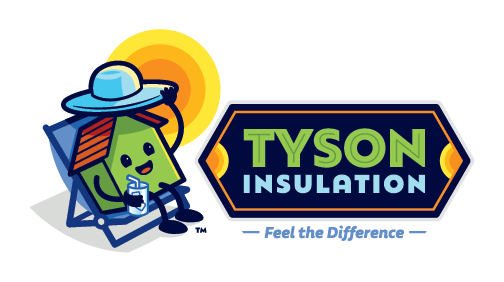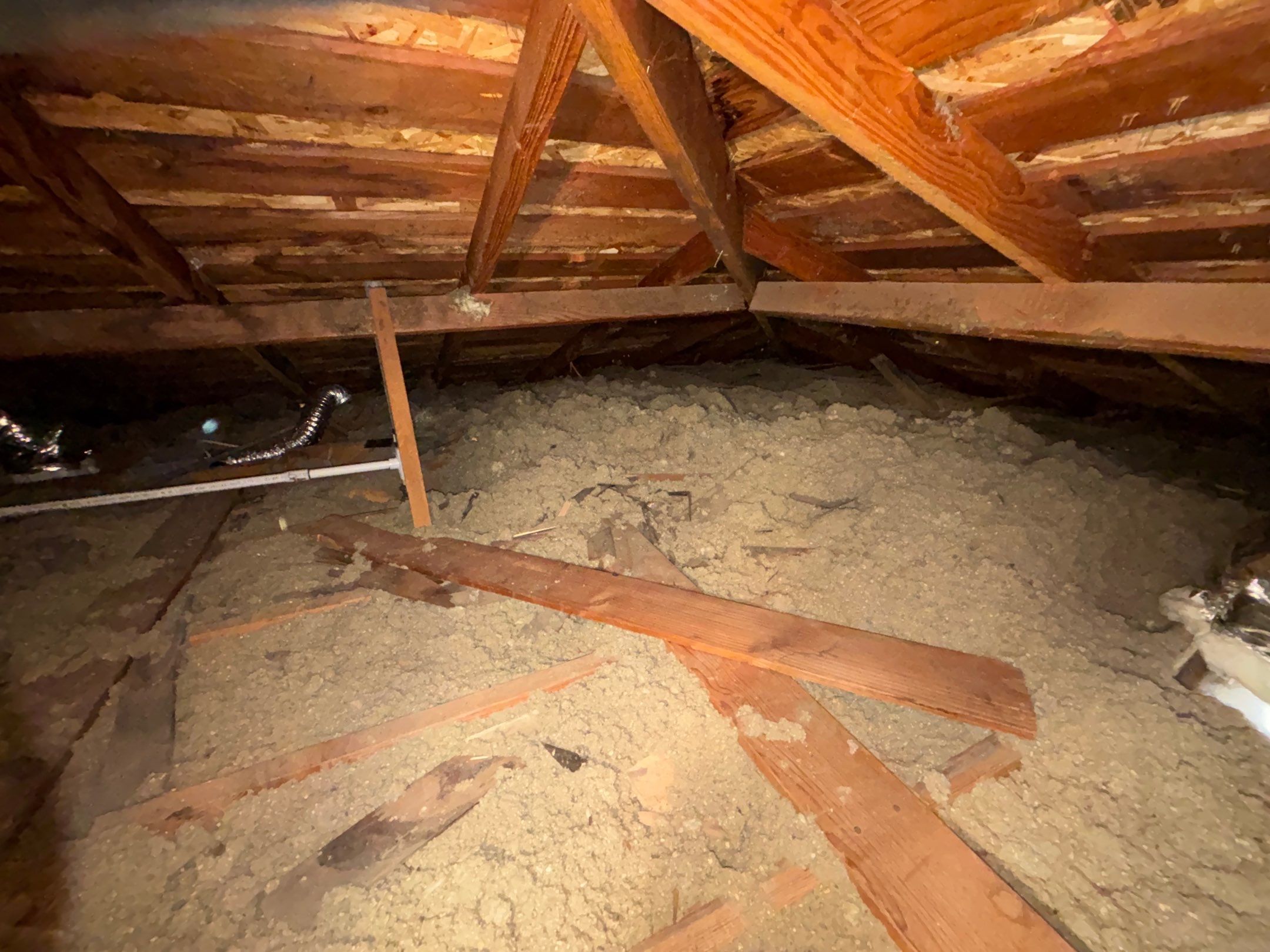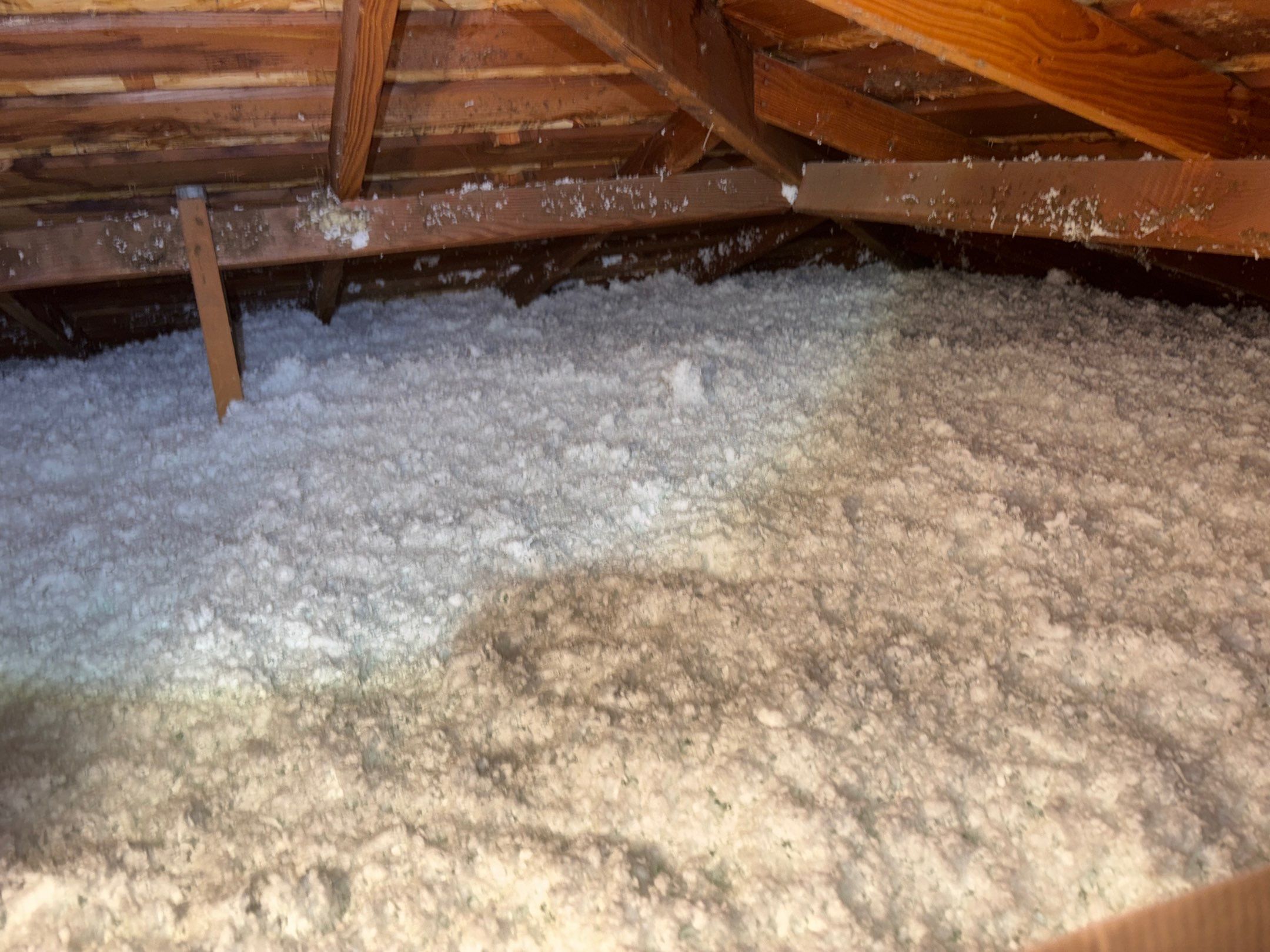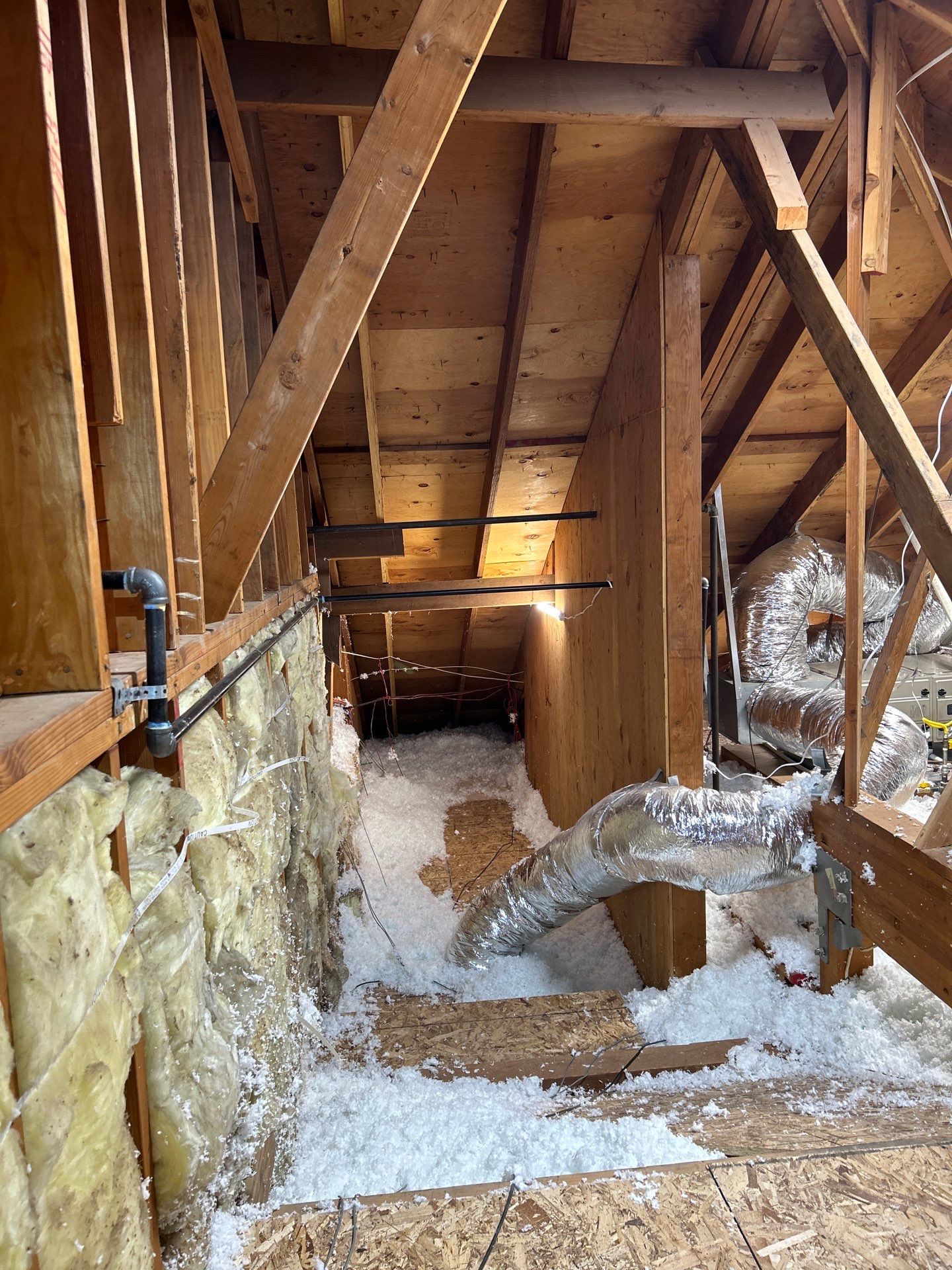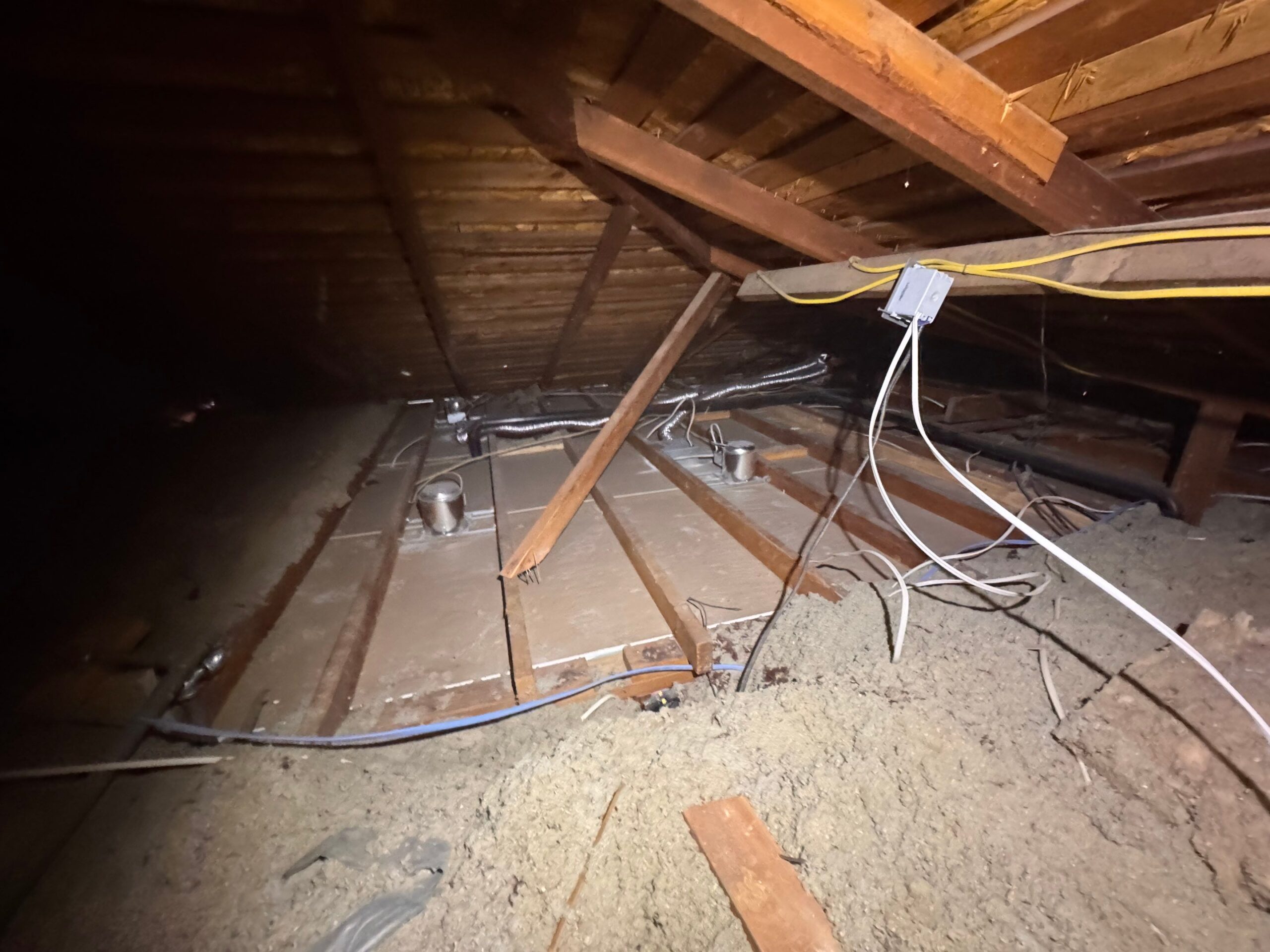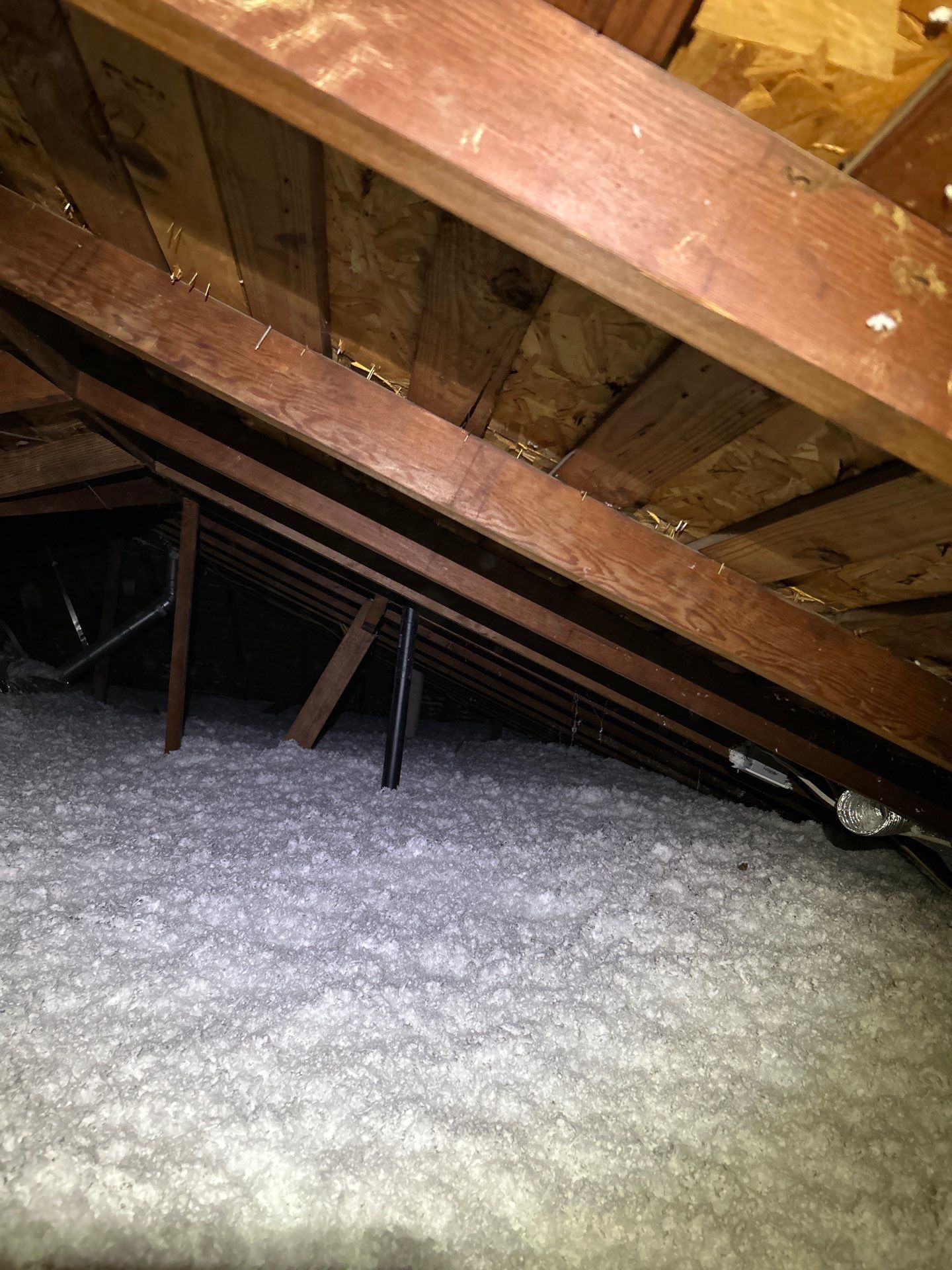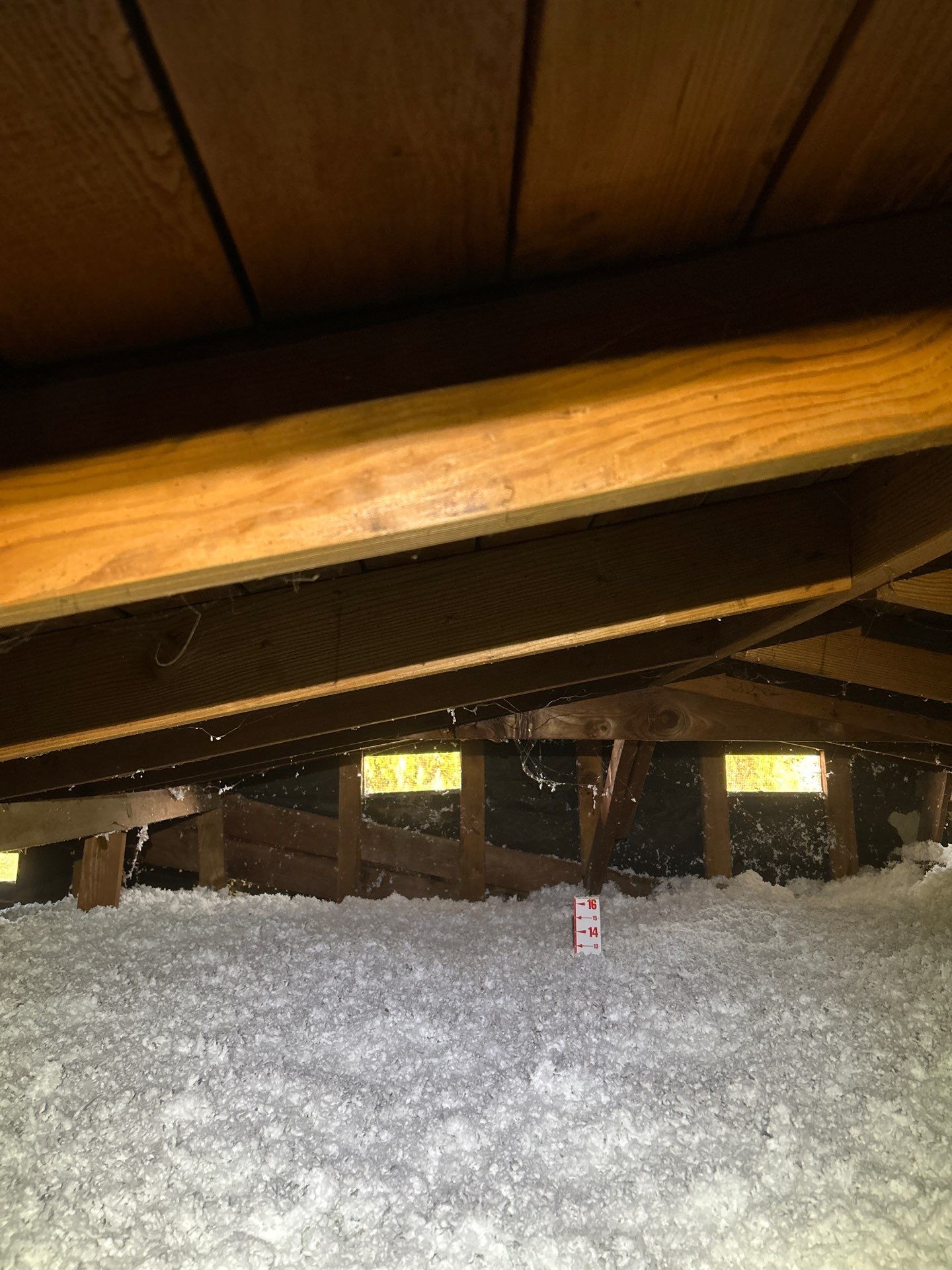Tyson Insulation Before & After Photos
Click on a photo to enlarge.
Gertrude reached out to us because her home was struggling to maintain a comfortable temperature, causing her HVAC system to run excessively. Upon inspecting her attic, we discovered that she had only 5 inches of cellulose insulation—far below the recommended level for energy efficiency. With insufficient insulation, her home was losing valuable heated and cooled air, leading to higher utility costs and reduced comfort.
To solve the issue, we upgraded her attic insulation to an R38 level using premium, blown-in fiberglass insulation. This upgrade significantly enhances the home’s ability to retain indoor temperatures, reducing the strain on her HVAC system and lowering energy bills. By bringing her insulation up to Energy Star standards, Gertrude can now enjoy a home that stays cooler in the summer, warmer in the winter, and much more energy-efficient year-round.
Amber reached out to us after experiencing persistent bad odors and poor air quality in her home. When we inspected her attic, we uncovered a major issue—a possum infestation. The attic was littered with droppings and debris, creating not only a health hazard but also compromising the efficiency of her insulation. On top of that, she had only 7 inches of old fiberglass insulation, which wasn’t nearly enough to keep her home comfortable year-round.
To fully restore Amber’s attic, we began by safely removing all contaminated insulation and thoroughly cleaning the space. We then sanitized the entire attic using Nisus DSV, a powerful disinfectant that eliminates bacteria, viruses, and odors left behind by the pests. Next, we sealed all possible entry points to prevent future infestations, ensuring that no more unwanted critters could make their way inside.
Once the attic was clean and pest-free, we addressed energy efficiency by air sealing any gaps and leaks to prevent conditioned air from escaping. We then installed 14 inches of premium blown-in fiberglass insulation, bringing the attic up to the R38 standard recommended by Energy Star. This upgrade will help Amber enjoy a more comfortable home, lower energy bills, and improved indoor air quality for years to come.
Thanks to this full attic restoration, Amber’s home is now clean, fresh, and properly insulated—completely transformed from the contaminated, inefficient space it once was!
When Gary reached out to us, he was struggling with high energy bills and an uncomfortable home, particularly during the extreme summer heat in Clovis. After inspecting his attic, we quickly identified the problem—only 4 inches of old, dirty cellulose insulation remained, offering minimal thermal protection. Additionally, there was debris and evidence of air leakage, contributing to poor indoor air quality and inefficient HVAC performance.
To restore his attic, we started by safely removing all the old insulation and thoroughly cleaning and sanitizing the space using Nisus DSV disinfectant. This step eliminated contaminants, allergens, and any lingering odors. We then meticulously sealed all air leaks, including gaps around plumbing and electrical penetrations, using closed-cell foam to prevent conditioned air from escaping. Next, we ensured that all soffit vents were clear to promote proper attic ventilation, which is crucial for maintaining a balanced indoor climate.
Finally, we installed 14 inches of premium blown-in fiberglass insulation, bringing the attic up to the R38 standard recommended by Energy Star. This upgrade significantly boosts energy efficiency, reduces strain on the HVAC system, and helps maintain consistent indoor temperatures year-round.
Thanks to this full attic restoration, Gary can now enjoy lower utility bills, improved indoor air quality, and a home that stays cooler in the summer and warmer in the winter.
Claudia and Chris reached out to us because their home in Fresno was struggling to stay cool in the summer and warm in the winter. Their HVAC system was running almost nonstop, but the house still felt uncomfortable. When we inspected their attic, we found the culprit: only about 3 inches of old cellulose insulation, which was not providing adequate thermal resistance. Additionally, there were signs of air leakage and debris buildup.
To fully restore their attic, we started by removing all the old insulation and cleaning out any debris. We then sanitized the entire space using Nisus DSV, a hospital-grade disinfectant that eliminates bacteria, viruses, and other contaminants. Next, we sealed air leaks around top plates, plumbing penetrations, and electrical openings using closed-cell foam to prevent unwanted airflow between the attic and the living spaces. We also secured potential rodent entry points to protect the attic from infestations in the future.
Once the attic was fully prepped, we installed new blown-in fiberglass insulation at an R38 level, ensuring Claudia and Chris’s home would be well-insulated year-round. This upgrade will significantly improve their indoor comfort, reduce energy bills, and enhance their home’s overall efficiency.
Now, their home stays comfortable in all seasons, and their HVAC system won’t have to work overtime, leading to long-term savings and better indoor air quality!
Arnie contacted us because his home was struggling to maintain a steady temperature, causing discomfort and high energy costs. When we inspected his attic, we found that he only had about 4 inches of old cellulose insulation—far below the recommended level for energy efficiency. The insufficient insulation was allowing heat to enter in the summer and escape in the winter, forcing his HVAC system to work harder than necessary.
To resolve this, we upgraded his attic to the Energy Star-recommended R38 level by adding premium blown-in fiberglass insulation. This high-performance insulation will help Arnie’s home maintain a more stable indoor temperature, reducing the strain on his heating and cooling system. As a result, he’ll experience a more comfortable living space and lower energy bills year-round.
With this upgrade, Arnie can now enjoy a home that stays cooler in the summer, warmer in the winter, and much more energy-efficient for years to come!
